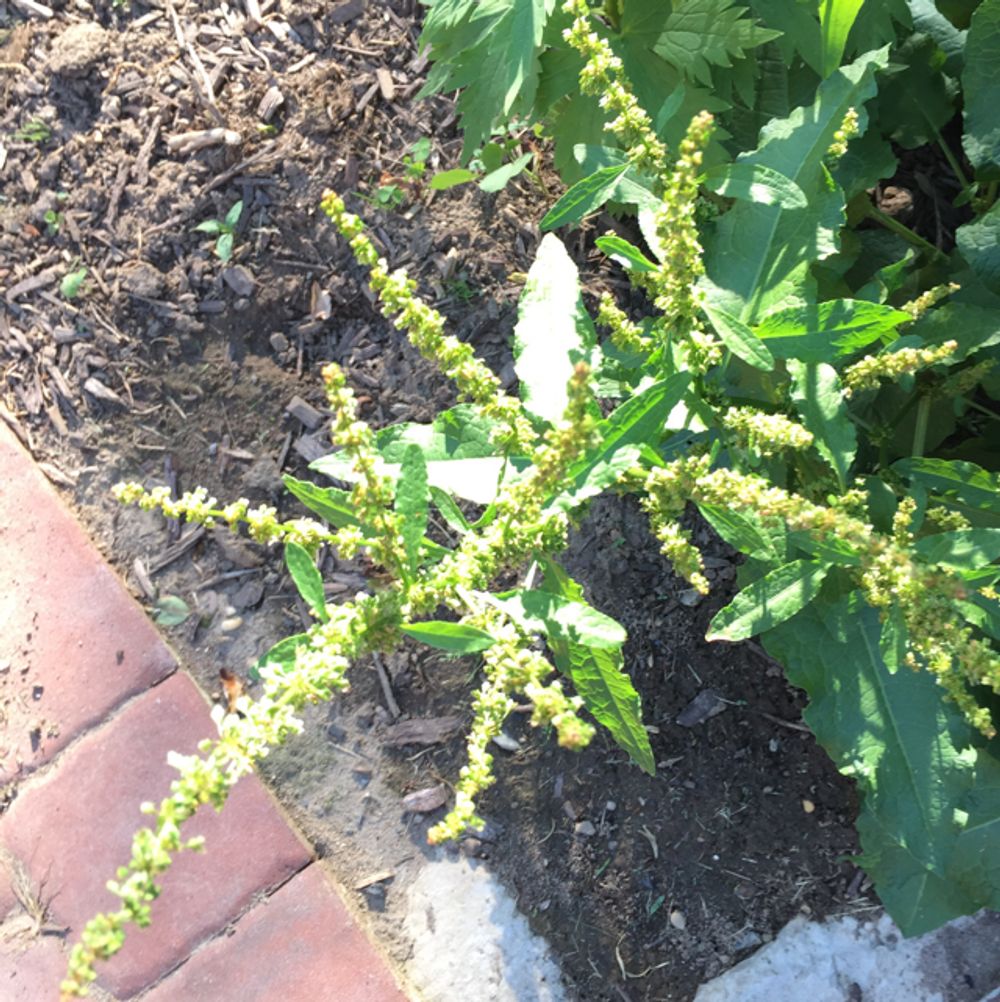Dock
(Rumex)

Description
“Pet poisonous” - Toxic to Dogs Rumex is a genus of plants that belong to the family Polygonaceae. The genus contains approximately 200 species that are distributed globally, with most species found in temperate regions. These plants are commonly known as docks or sorrels, and they are known for their culinary and medicinal uses. In this article, we will explore the various aspects of the Rumex genus, including their morphology, distribution, ecology, and uses. Morphology The plants in the Rumex genus are perennial or annual herbs that range in size from small plants to tall shrubs. They have simple, alternate leaves that are often basal, and they may be either deciduous or evergreen. The leaves are usually long and lanceolate, with prominent veins and often with a waxy cuticle to reduce water loss. They also have sheathing stipules at the base of the petioles that protect the young shoots. The flowers are small and inconspicuous, arranged in long inflorescences called racemes, and the individual flowers have six tepals that are arranged in two whorls of three. The tepals are usually green or pinkish and have no petals. The stamens and carpels are also usually six in number. The fruit is a dry, indehiscent, and usually one-seeded achene, which is often winged, allowing the wind to disperse the seeds over a wide area. Distribution and Ecology The Rumex genus is distributed throughout the world, with most species found in temperate regions, especially in the Northern Hemisphere. They are commonly found in grasslands, meadows, and disturbed areas, including roadsides and waste places. Some species are also adapted to wetlands, such as Rumex aquaticus, which is a common water plant. The plants in the Rumex genus are known for their ability to grow in a wide range of soils, from heavy clay to sandy soils, and they are also tolerant of both acidic and alkaline soils. They are often found growing in areas where the soil is poor or has been disturbed, and they are considered to be pioneer species in many areas. The roots of the plants in the Rumex genus are long and tap-like, which enables them to access deep water and nutrients from the soil. Uses The plants in the Rumex genus have a wide range of uses, including culinary and medicinal applications. The young leaves of many species are edible and have a tangy, sour taste that is often used in salads and other dishes. The leaves are rich in vitamin C and other minerals, and they are also a good source of antioxidants. Some species of the Rumex genus are also used in traditional medicine to treat a range of ailments. For example, the roots of Rumex crispus, also known as yellow dock, are used to treat digestive problems and skin conditions, while the leaves of Rumex acetosa, also known as garden sorrel, are used to treat fever and scurvy. In addition to their culinary and medicinal uses, some species of the Rumex genus are also used in the production of natural dyes. The roots of Rumex obtusifolius, also known as bitter dock, produce a yellow dye, while the roots of Rumex pulcher, also known as fiddle dock, produce a red dye. Conclusion The Rumex genus is a fascinating group of plants that have a wide range of uses and adaptations. From their ability to grow in a wide range of soils to their culinary and medicinal applications, these plants are an important part of many ecosystems and cultures. Whether you are interested in gardening, natural medicine, or botany, the Rumex genus is a group of plants that is well worth exploring further.
Taxonomic tree:







